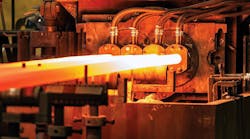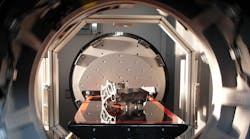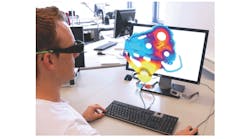MAGMA Foundry Technologies has released the latest update to its casting process simulation software, MAGMA5, noting that v.5.2 delivers “significant new and improved functionality.” Over 160 improvements are included with this release, which was developed with an emphasis on increasing the efficiency for evaluating simulation results.
The developer’s product and service portfolio includes the MAGMASOFT modular simulation software (for which MAGMA5 is the latest version) as well as engineering services for casting design and optimization. MAGMA5 5.2 allows the direct comparison of up to four different project versions in the result perspective. Filling, solidification and stress results can be animated in a synchronized mode.
A noteworthy highlight of the new release is the option to display the geometry and all MAGMA5 results in 3D stereo, using shutter or red/cyan 3D glasses and to store them as 3D images or movies. Various new tools make it possible to standardize results evaluation.
New result criteria allow for a more effective evaluation of metal cooling and critical metal speeds during filling. The progress of feeding and porosity formation can be monitored and displayed continuously during the entire solidification process. A new criterion to predict cold cracks allows the user to find stress-related casting quality problems more quickly.
The implementation of user results offers a powerful tool for compiling user-specific criteria based on any MAGMA5 results. User results can easily be defined and created automatically during a simulation or subsequently in the result perspective.
Diecasters will appreciate an improved visualization of the process time line and extended consideration of the heat-transfer conditions between the die and the diecasting, as a function of the local feeding conditions. Also, the MAGMAhpdc module now supports assessments of the real casting temperature as a function of the current shot sleeve conditions.
All users will benefit from the new “resume point” capability, which allows flexibility in re-starting the simulation with modified die casting process conditions, based on the previous or next-to-last casting cycle. Sand casting processes can be resumed with different conditions at the end of any process stage. The automatic enmeshment of complex geometries is now further simplified by new enmeshment criteria and procedures.
Stress simulation results can be prepared for faster post-processing. For the quantitative assessment of casting distortion in the measurement perspective, it is now possible to compare the virtual measurement with the real part geometry.
Finally, MAGMA5 5.2 makes available a new database of riser sleeves, generated by ASK Chemicals.
Visit www.magmasoft.com









